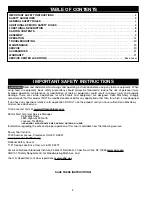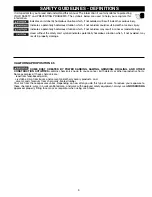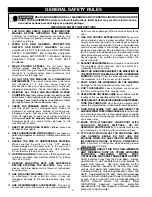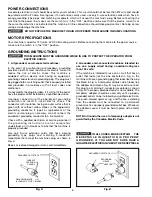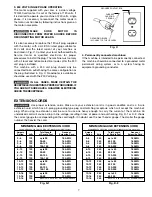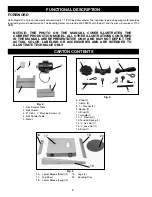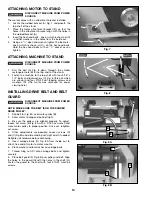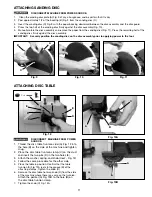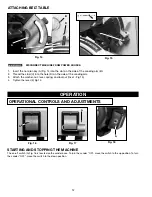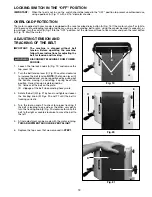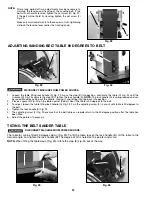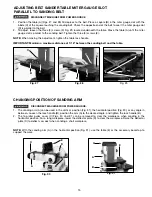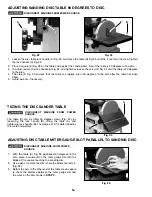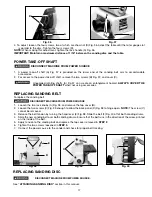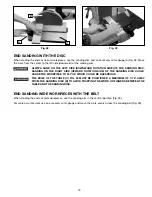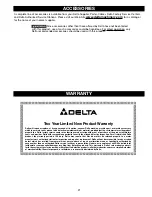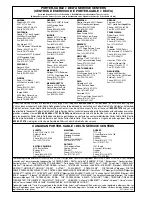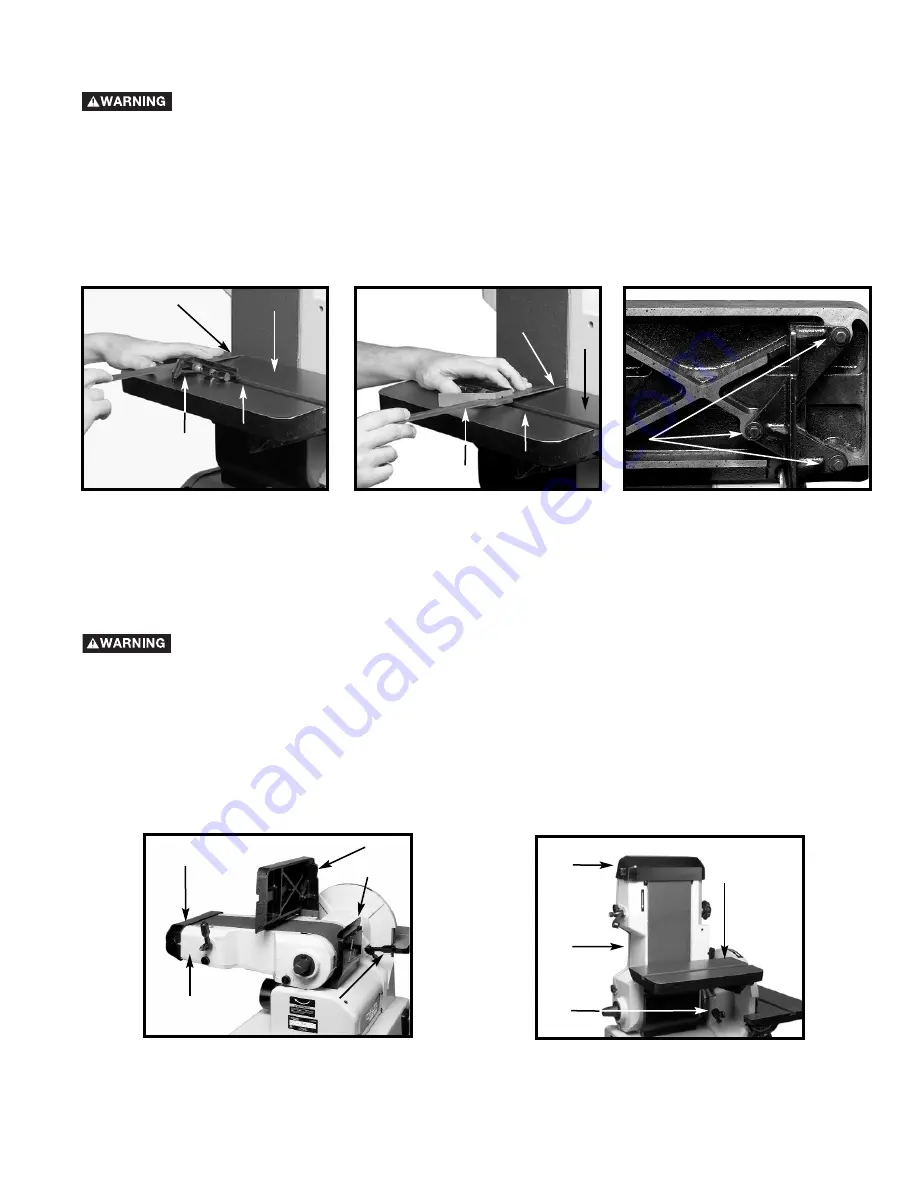
15
CHANGING POSITION OF SANDING ARM
DISCONNECT MACHINE FROM POWER SOURCE.
1.
The sanding arm (A) can be used in the vertical position (Fig. 31), the horizontal position (Fig. 30), or any angle in
between. Loosen the lock handle (B), position the arm (A) to the desired angle, and tighten the lock handle (B).
2.
The top idler pulley cover (C) Figs. 30 and 31 can be removed to clear the workpiece when sanding in the
horizontal position. For a long workpiece, lower the deflector plate (D) to clear the workpiece. Raise the deflector
plate (D) to deflect saw dust when sanding a short workpiece.
NOTE:
With the sanding arm (A) in the horizontal position (Fig. 31), use the table (E) or the accessory backstop to
support the work.
Fig. 27
Fig. 31
Fig. 30
1.
Position the table (A) (Figs. 27 and 28) 90 degrees to the belt. Place a square (B) in the miter gauge slot with the
blade (C) of the square touching the sanding belt. Check the opposite end of the belt to see if the miter gauge slot
(D) is parallel to the belt.
2.
To adjust, loosen the three (3) screws (E) Fig. 29, located underneath the table. Move the table (A) until the miter
gauge slot is parallel to the sanding belt. Tighten the three (3) screws (E).
NOTE:
When making this adjustment, tighten the table lock handle.
IMPORTANT: Maintain a maximum distance of 1/16" between the sanding belt and the table.
DISCONNECT MACHINE FROM POWER SOURCE
ADJUSTING BELT SANDER TABLE MITER GAUGE SLOT
PARALLEL TO SANDING BELT
B
C
D
A
B
C
D
A
E
C
A
E
D
B
A
C
E
B
Fig. 28
Fig. 29
Summary of Contents for (Model 31-300)
Page 22: ...22 NOTES...
Page 23: ...23 NOTES...


